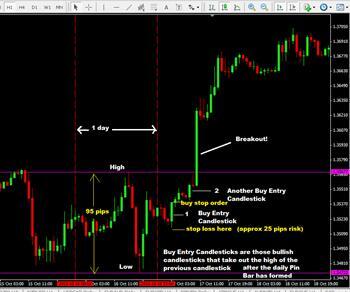Pivot Point: Definition, Formulas, and How to Calculate

When an asset is traded over the pivot point, it’s a sign of bullish market sentiment. Conversely, when the asset is traded below the pivot point, the market is believed to show a downtrend movement. On a final note, sometimes the second or third support/resistance levels are not seen on the chart.
The pivot point is a leading technical analysis indicator used to foresee market direction, potential support and resistance levels. It’s widely implemented on different markets, such as forex, commodities, and indices, on various time frames. Support and resistance levels based on Pivot Points can be used just like traditional support and resistance levels. The key is to watch price action closely when these levels come into play. Should prices decline to support and then firm, traders can look for a successful test and bounce off support. It often helps to look for a bullish chart pattern or indicator signal to confirm an upturn from support.
Common Mistakes when Trading with Pivot Points
For instance, a trader may enter a limit order to purchase 100 shares when the price surpasses a predetermined resistance level. Conversely, an investor may place a stop loss level close to or at the support level. Like all other indicators, there are other ways of calculating pivot points, but the above is the standard method. Pivot Points can be added on to a chart in the IG platform by selecting the indicator drop down menu and choosing ‘pivot points’ or by right-clicking to select them.
You can use them on their own or in combination with other indicators. The second option allows you to create and practice your unique trading strategy. To calculate these levels, use the previous week’s high, low and close.
Learn to trade
Or, last week’s range if you want to calculate weekly pivot points or, last month’s range for monthly pivot points and so on. Typically, the top red lines represent resistance, while the bottom green lines represent support. The RSI shows trend strength and momentum, and its divergences highlight when a prevailing trend is losing momentum and a potential reversal is nigh. There are a lot of strategies for using Pivot Points by traders.
Which pivot points are best for swing trading?
For swing trading, weekly and monthly pivots are the best option. You can use them to trade different markets structures: price trending or ranging. They are useful to understand the current market trend and filter your trades.
If a divergence happens at a pivot line, this is a strong confluence signal that implies the relevant support or resistance line will hold. Price breakouts occur when the price surges through an existing support or resistance level and effectively switches its role. For instance, if a downward breakout occurs at S2, the pivot line will cease to be a support line and will now be considered a line of resistance. The pivot points will serve as support and resistance areas where the asset price will bounce off from. They will represent an area in the market where the prevailing market sentiment will shift. Compared to Persons Pivots, Pivot Points uses different determination of weekly and monthly timeframes.
Market sessions
Traders employ pivot points and the support and resistance levels they establish to identify possible entry and exit points, both for stop-losses and profit-taking. This is the 5-minute chart of Bank of America from July 25-26, 2016. The image illustrates bullish trades taken based on our pivot point breakout trading strategy. However, there are four resistance levels and four support levels. In contrast, the Woodie pivot point has two Resistance levels and two Support levels. We use the first trading session to attain the daily low, daily high, and close.

Pivot Points use the previous days Open, High, and Low to calculate a Pivot Point for the current day. Using this Pivot Point as the base, three resistance and support levels are calculated and displayed above and below the Pivot Point. This would serve swing traders and, to a lesser extent, day traders. Pivot points offer traders a methodology to determine price direction and set support and resistance levels. Given how easy they are to calculate, pivot points can be incorporated into many trading strategies, making them a valuable addition to anyone’s trading arsenal. The pivot point indicator is an easy to use tool that’s been incorporated in most trading platforms.
Trading with Pivot Points
If the pivot point price is broken in an upward movement, then the market is bullish. If the price drops through the pivot point, then it’s is bearish. This is a big candle that https://forexhero.info/tornado-web-server/ follows another big candle of a different color. It’s recommended to open positions in the direction of the engulfing candle when it’s located close to the pivot point level.
What are pivot points R1 R2 R3?
Resistance 1 (R1) is the first pivot level above the basic pivot point. Resistance 2 (R2) is a pivot level above resistance 1 or the second line over the basic pivot point. Resistance 3 (R3) is a pivot level above resistance 2 or the third line over the basic pivot point.



